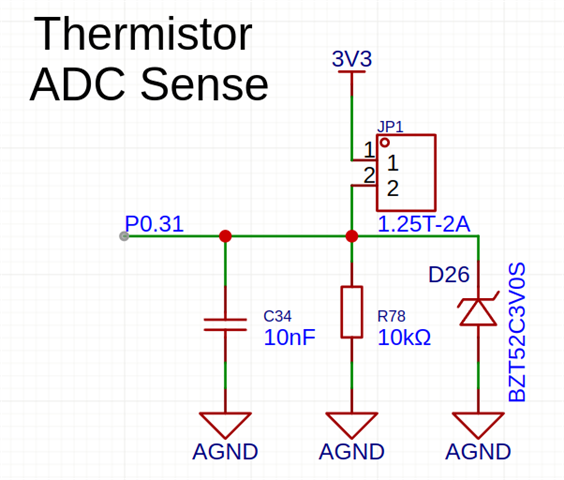Hi,
I am using a custom nRF52832 board with multiple ADC channel readings sequentially. I am trying to read thermistor (NTC) value on channel 7 and not getting accurate reading. As soon as I plug the thermistor, the value goes on decreasing/ stabilizing which goes below the actual/ anticipated reading that could be due to hardware/ software issue in my setup.
The schematic of that specific channel is:

The DTS for that specific channel is:
This is the output of channel 7 readouts after 1 sec interval:
The ADC reading falls/ stabilizes from 555 to 505 and I expect a value around 540 (measuring thermistor from meter then converting to raw adc value).
I have tried setting VDD and different ACQ times but didn't help.
Please suggest a solution.
Regards


